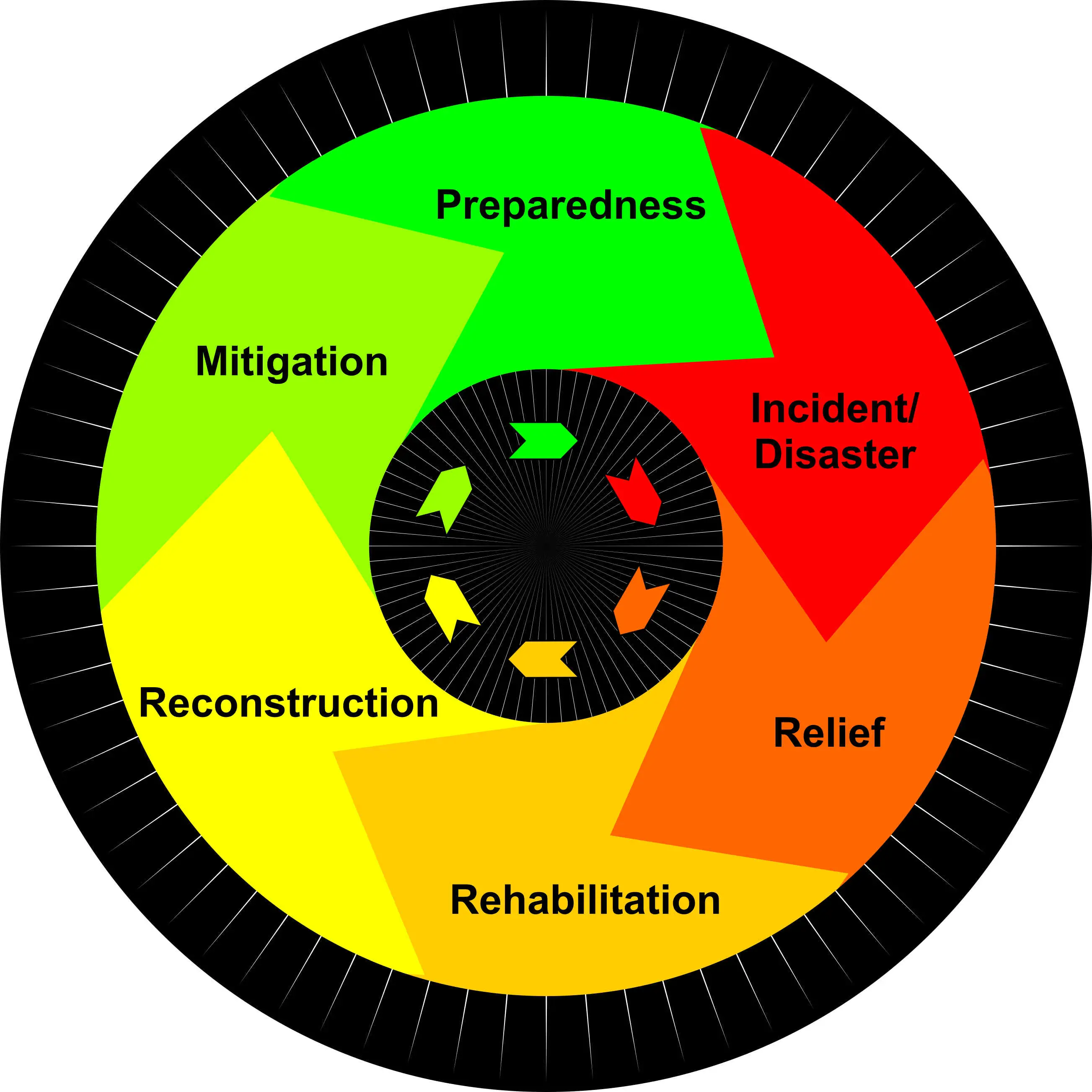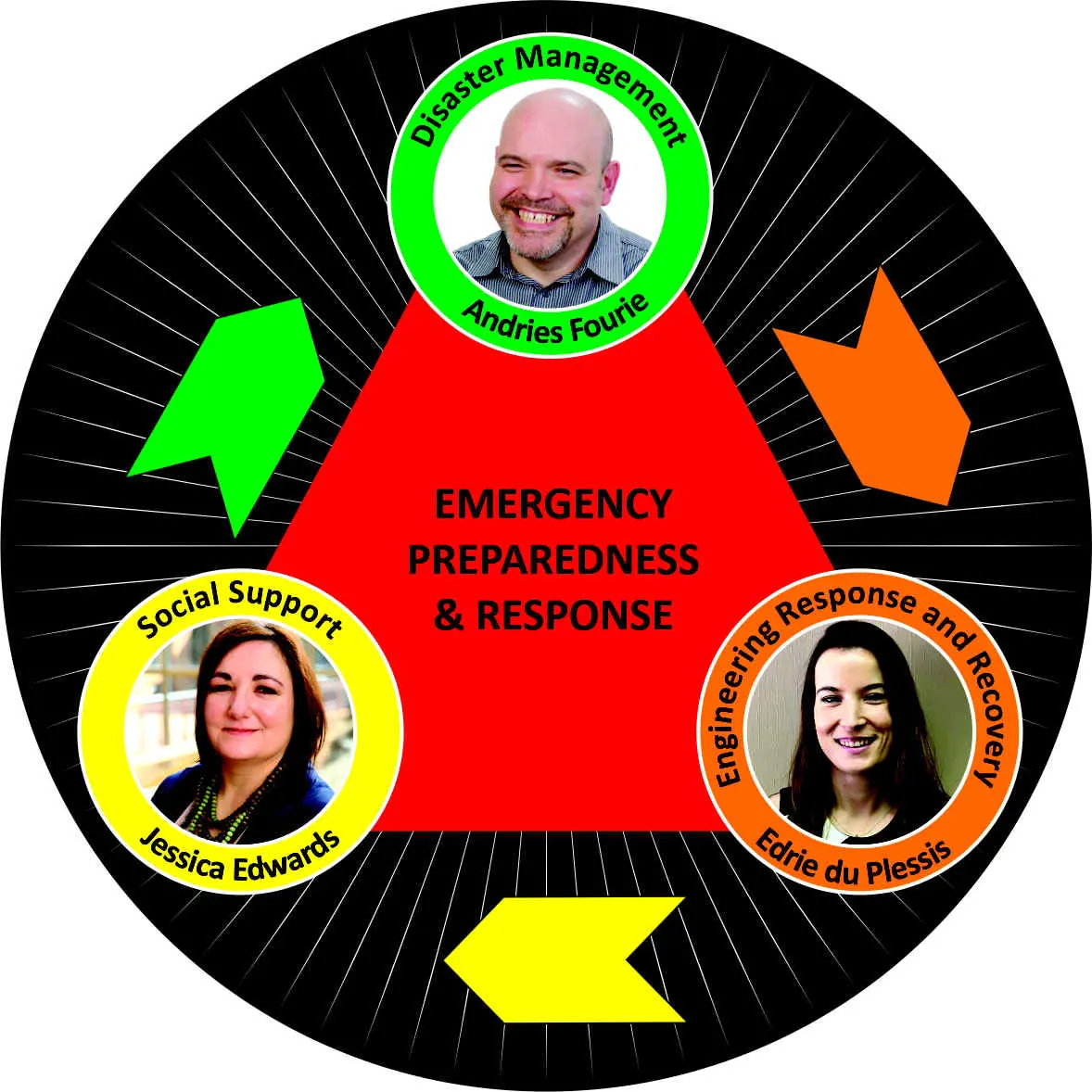Even with the range of mitigation measures applied by mines to ensure that tailings storage facilities (TSFs) are safe, the Global International Standards on Tailings Management (GISTM) highlights that catastrophic failure may still occur – and outlines how mines should then respond.
In Topic V – Emergency Response and Long-Term Recovery – the GISTM covers actions that many mines already apply when adopting a best practice approach. These include a site-specific Emergency Preparedness and Response Plan (EPRP) for the TSF, based on credible flow failure scenarios. Such scenarios would predict the possible inundation area, the time of arrival of tailings flow after a breach, and the depth of flow. The standard takes it further, however. In addition to providing an effective immediate response to save lives, mines are also called upon to provide humanitarian aid and minimise environmental harm.
Emergency readiness and response can be regarded essentially as disaster management, a field that is well recognised legally in most countries (for instance, by South Africa’s Disaster Management Act) and supported internationally by the United Nations. Significantly, the scope of responsibilities within this field is usually well beyond the capacity of an individual mine, so collaboration with other stakeholders is a vital element of an effective response. Such interaction, however, is often complex. The effectiveness of communicating the importance of testing and review as a risk reduction measure has to be undertaken with various stakeholders, also considering the risk rating of the TSF. Comparing this to safety belts in motor cars, everyone should wear one as a risk reduction measure, but the driver should still drive with caution.
Starting at mine level, an EPRP firstly demands close cooperation between engineering and social teams – to ensure that the plan has technical integrity and can be both informed by and communicated to local communities and relevant stakeholders. In addition to being documented, the plan also needs to be tested or simulated; regular drills, for instance, need to be prioritised, while recognising that engagements like these can only be implemented on a foundation of trust and collaboration.
Key to the GISTM requirements is meaningful engagement with employees and contractors on the EPRP, and ‘co-developed’ community-focused emergency preparedness measures with project-affected people. In line with disaster management principles, mines also need to coordinate with public sector agencies, emergency services (first responders) and local authorities to harness the scale of resources necessary for an emergency response. In South Africa, the role of the National Disaster Management Centre would be important. These stakeholders, according to the standard, should also help identify gaps in capability – to improve preparedness.
The GISTM’s inclusion of humanitarian aid highlights the need for a well-coordinated joint response to TSF failure, as this function would certainly require levels of resources and specialised expertise outside a mine’s capability. The same could be said of the GISTM’s Principle 14, which requires mines to prepare for long-term recovery after a catastrophic failure. Here, the requirements include applying and assessing post-failure response strategies; planning for reconstruction, restoration and recovery plans; the participation of affected people; and ongoing monitoring and reporting.
Emergency preparedness and response places onerous demands on mines, among them the cost implications of an EPRP and recovery actions. Mines may also be uncertain about the capacity of government agencies – including local government – to play their role in an emergency response. The remote location of many mines is likely to complicate a quick and meaningful response by humanitarian agencies. The solution must nonetheless be built on good communication and collaboration with local communities and key stakeholders. The advent of the GISTM is a signal to industry that the world has changed, and the standard provides a demanding, but exciting, opportunity to raise the bar in tailings management. Click on the GISTM link





